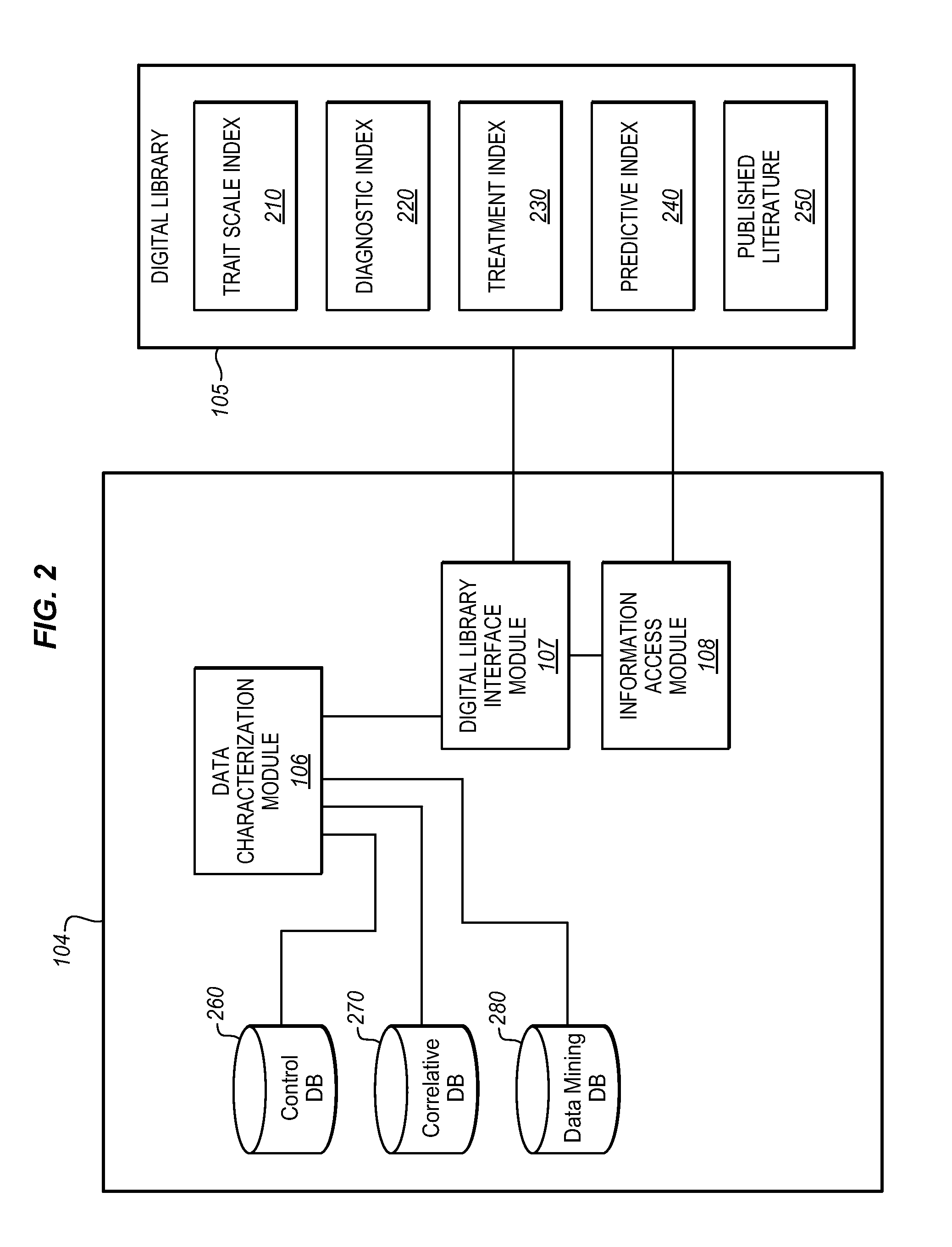Data management apparatus for comparing patient data with ailment archetypes to determine correlation with established ailment biomarkers
a data management apparatus and disease archetype technology, applied in the field of medical data processing systems, can solve the problems of stalled patient point-of-care decision, significant cost of empirical clinical trial time and cost, and risk of future contradictory or displacing research
- Summary
- Abstract
- Description
- Claims
- Application Information
AI Technical Summary
Benefits of technology
Problems solved by technology
Method used
Image
Examples
example
[0110]If a matrix is a diagonal matrix, then its eigenvalues are the numbers on the diagonal and its eigenvectors are basis vectors to which those numbers refer. For example, the matrix
[3000.5]
stretches every vector to three times its original length in the x-direction and shrinks every vector to half its original length in the y-direction. Eigenvectors corresponding to the eigenvalue 3 are any multiple of the basis vector [1, 0]; together they constitute the eigenspace corresponding to the eigenvalue 3. Eigenvectors corresponding to the eigenvalue 0.5 are any multiple of the basis vector [0, 1]; together they constitute the eigenspace corresponding to the eigenvalue 0.5. In contrast, any other vector, [2, 8] for example, will change direction. The angle [2, 8] makes with the x-axis has a tangent of 4, but after being transformed, [2, 8] is changed to [6, 4], and the angle that vector makes with the x-axis has a tangent of ⅔.
[0111]Linear transformations of a vector space, such as r...
PUM
 Login to View More
Login to View More Abstract
Description
Claims
Application Information
 Login to View More
Login to View More - Generate Ideas
- Intellectual Property
- Life Sciences
- Materials
- Tech Scout
- Unparalleled Data Quality
- Higher Quality Content
- 60% Fewer Hallucinations
Browse by: Latest US Patents, China's latest patents, Technical Efficacy Thesaurus, Application Domain, Technology Topic, Popular Technical Reports.
© 2025 PatSnap. All rights reserved.Legal|Privacy policy|Modern Slavery Act Transparency Statement|Sitemap|About US| Contact US: help@patsnap.com



